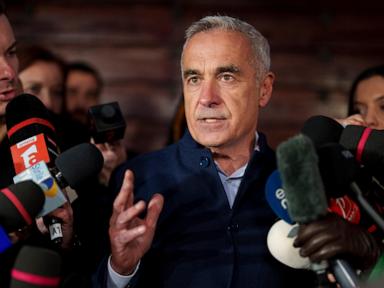ARTICLE AD BOX
VICTIMS of the 79AD Mount Vesuvius eruption died when extreme heat caused their blood to boil and their heads to explode, experts say.
Researchers said some of the victims who died were trapped in oven-like chambers where the temperature reached as high as 500C.
 Petrone et al/PLOS One
Petrone et al/PLOS One Petrone et al/PLOS One
Petrone et al/PLOS One Getty
GettyThe active volcano near Naples, Italy is famous for destroying several cities including Pompeii, spilling molten for two days and launching ash, gas, and rocks for almost 21 miles.
Residents of cities Oplontis, Pompeii, and Herculaneum who did not evacuate in time met grisly deaths.
Research published in PLOS One posited the theory that some of the victims died when their blood boiled and their heads exploded.
Some 300 people took shelter in 12 waterfront chambers in the city of Herculaneum as the volcano grumbled and spewed death.
All who huddled in the chambers died, their bodies trapped inside for thousands of years before they were discovered by excavators.
Their bodies were uncovered in the 1980s – preserved in lifelike poses.
In the report, the researchers studied the skeletal remains of some of the victims who hid in the shelters and found a mysterious black and red residue covering the bones inside their skulls.
Several tests found that the residue contained traces of iron and iron oxides – created when blood vaporises – which “strongly suggests a widespread pattern of heat-induced haemorrhage, intracranial pressure increase and bursting”.
The researchers said the bleeding, the increased pressure on the brain, and the subsequent bursting was “most likely to be the cause of instant death”.
Several of the skeletons’ skulls had gaping holes and stains which researchers said were consistent with “recurrent skull explosive fracture”.
The skull-caps appeared to have exploded outward, as the victims ‘ brains instantly turned to ash.
In Pompeii, two miles further from the volcano than Herculaneum, people were killed instantly by temperatures as high as 300C – but the heat was not enough to “vaporise the flesh of their bodies”.
Three million people live near the active volcano today, with another major eruption possible in the near future.
 Herculaneum pictured in modern times
Herculaneum pictured in modern times Petrone et al/PLOS One
Petrone et al/PLOS One BBC
BBC Getty
Getty
.png)
 7 months ago
4
7 months ago
4








 English (US)
English (US)